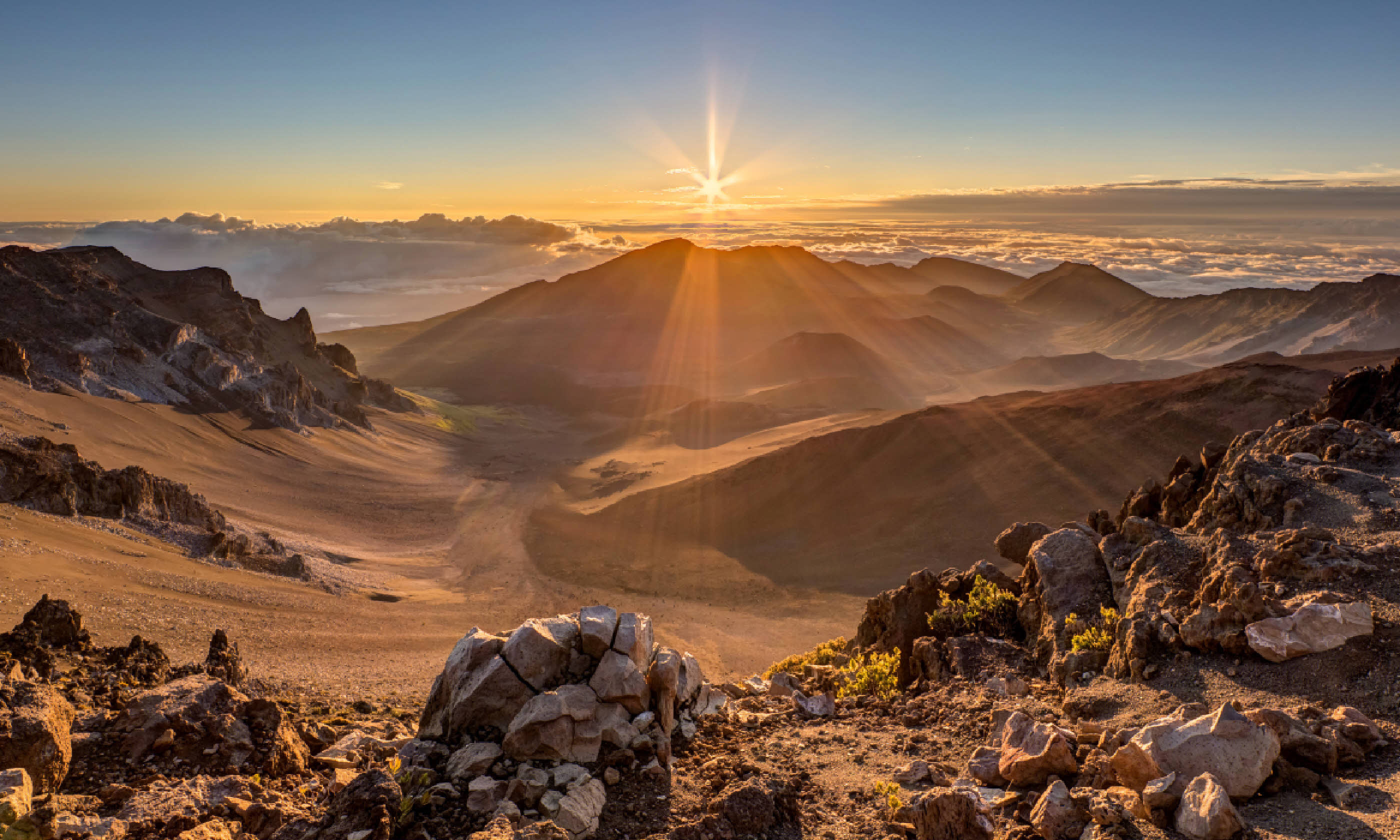
Craving adventure? Welcome to the USA's biggest, boldest and most beautiful national parks
Why go? It doesn’t have quite the scale of the Grand Canyon, but the sheer, 600m-high walls (some of the oldest exposed rock on the planet) flanking a 19km stretch of the Gunnison River are arguably more dramatic – at points, the gorge is only 12m wide. Indeed, the ‘Black’ of its name alludes to the darkness of its narrow depths.
This does make it tricky to access, but fabulous to look at. Kayaking, climbing and hikes down to the riverbed are the preserve of experts here. But two roads provide awesome overviews: the more developed South Rim Road has 12 viewpoints, some accessed by short hikes; the North Rim Road is wilder and offers the best perspectives.
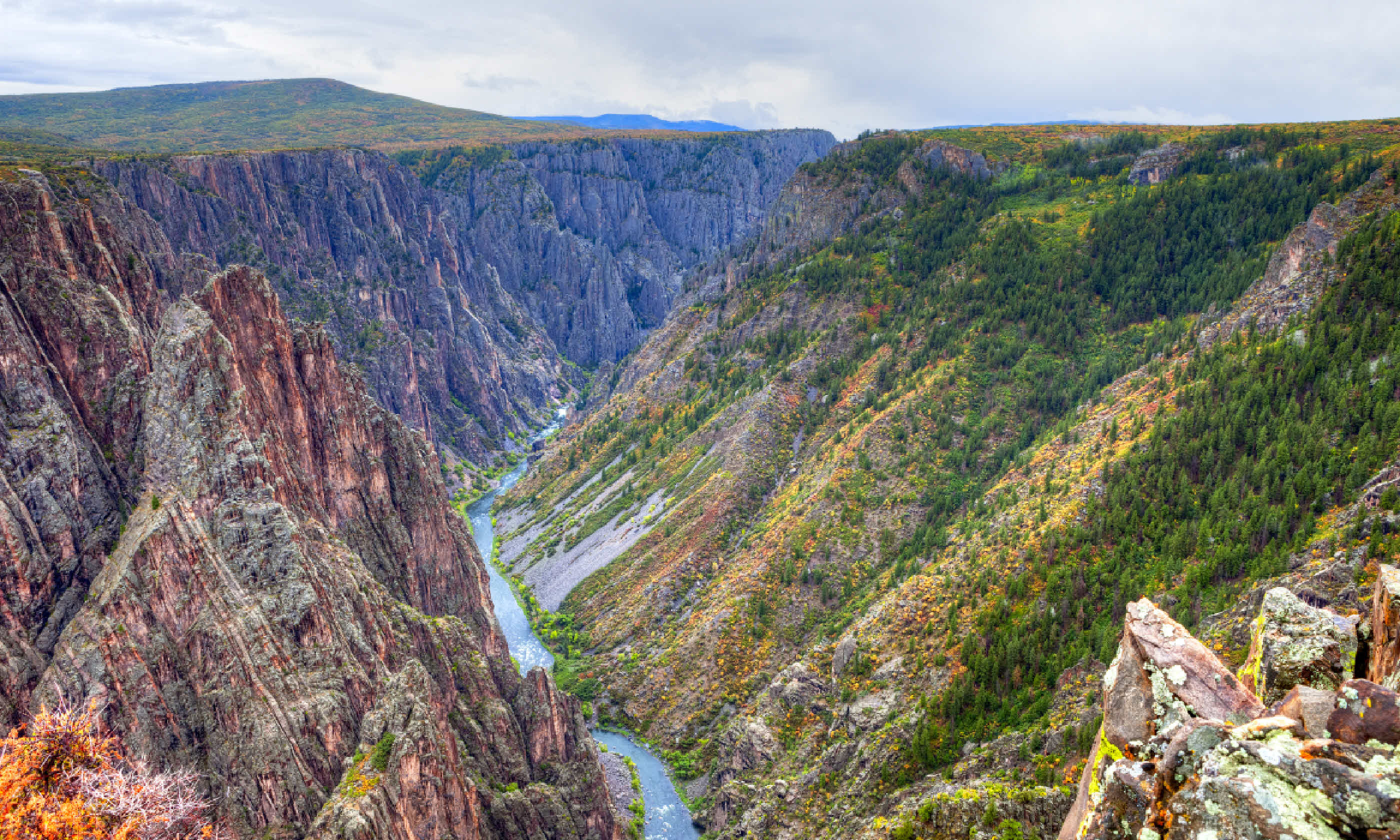
Black Canyon of the Gunnison National Park (Shutterstock)
When to go: Open year-round. In winter, North Rim Road and some of South Rim Road are closed; cross-country skiing and snowshoeing are possible on South Rim.
Plan your trip: The park is around 400km southwest of Denver. Make a loop of Colorado’s wild places, linking Rocky Mountain NP, Black Canyon, Mesa Verde, the San Juan Mountains and Great Sand Dunes NP. www.nps.gov/blca
Why go? Though just 160km from Anchorage, fewer than 12,000 visitors made it to Lake Clark in 2013. Indeed, plan an adventure in this expanse of glaciers, rugged mountains, salmon-heaving rivers, bear-foraged tundra and active volcanoes, and you won’t see many other souls.
Longer hikes – such as the 80km Telaquana Trail – are best suited to experienced backpackers; shorter tramps, using the trail system from Port Alsworth, are less daunting. Paddle trips are possible too: both lake kayaking and rafting the Grade III-IV rapids can be arranged with local operators in Anchorage.
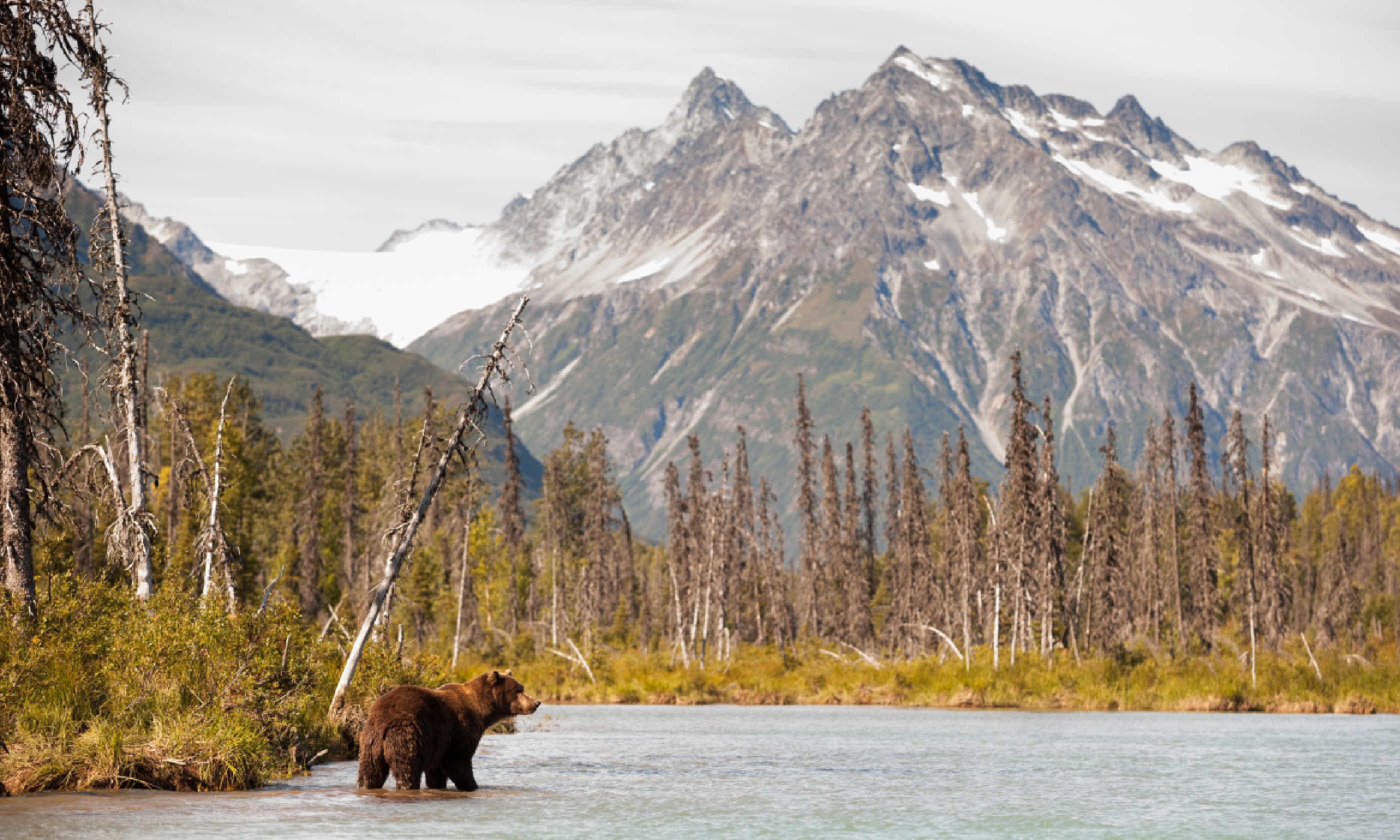
Brown bear, Alaska
When to go: Open year-round. Most people visit June-September for the best weather.
Plan your trip: Lake Clark is a one- to two-hour flight from Anchorage, Kenai or Homer; charter boats on the Kenai Peninsula run tours to parts of the park. Incorporate Lake Clark into a southern Alaska itinerary that also includes bear-watching in Katmai National Park or even a sail along the Aleutian chain. www.nps.gov/lacl
Why go? Lassen is the laidback Golden State at its most inhospitable. All four types of volcano are found here: shield, cinder cone, composite and plug dome; 3,187m active Lassen Peak is one of the largest plugs in the world. Add sizzling fumaroles and burping mudpots, and this is weirdly wonderfully lively terrain.
Most of the main geothermal features can be seen from the main park road. For a closer look, hit the 240km hiking network, which includes the 5km Bumpass Hell path (usually open mid-July-October); this heads into a basin a-bubble with mudpots and steaming pools.
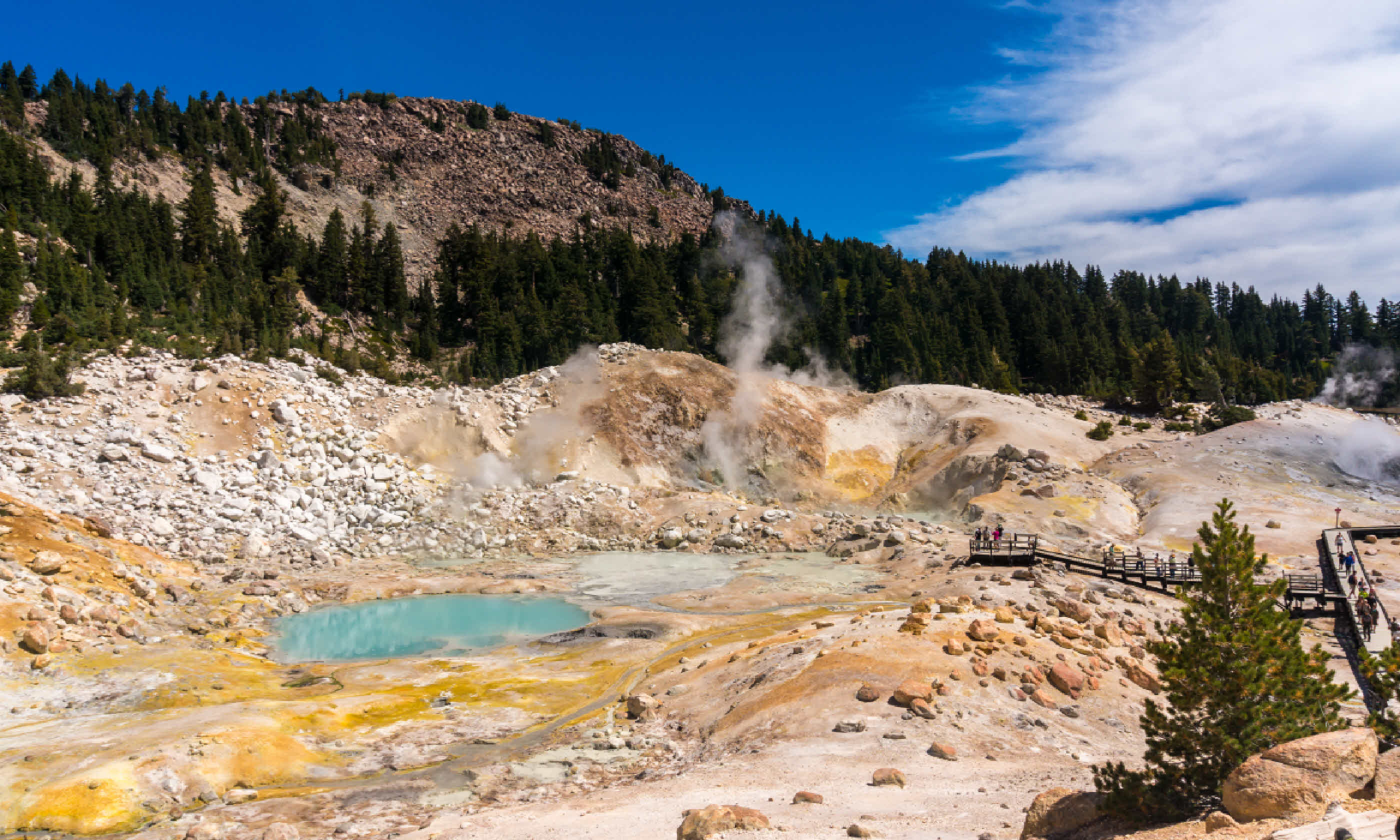
Lassen Volcanic national park (Shutterstock)
Winter hits hard at Lassen: 15m of snow isn’t unusual. Roads close, so cross-country skiing and snowshoeing are the ways to go; ranger-guided snow-hikes are run for novices.
When to go: Open year-round. Winter/spring access is limited. Mosquitoes are most problematic June-July.
Plan your trip: The park is 265km north of Sacramento. Plan a northern California roadtrip loop from San Francisco, also visiting Napa Valley’s wineries, Lake Tahoe and Yosemite. www.nps.gov/lavo
Why go? This park is a jack-of-all-trades. It incorporates a diverse range of habitats from the glacier-cloaked highs of the Olympic Mountains to moss-fuzzed temperate rainforest; its wild Washington coast section – separate from the main bulk of the park – is dotted with tidal pools, driftwood and Native American settlements.
The park is encircled by Highway 101 but few roads penetrate far within its boundaries, so you need to explore on foot – there are plenty of day-hike trails as well as tougher backpacking options. Try tramps from the Dosewallips park entrance for spectacular views of Mount Anderson.
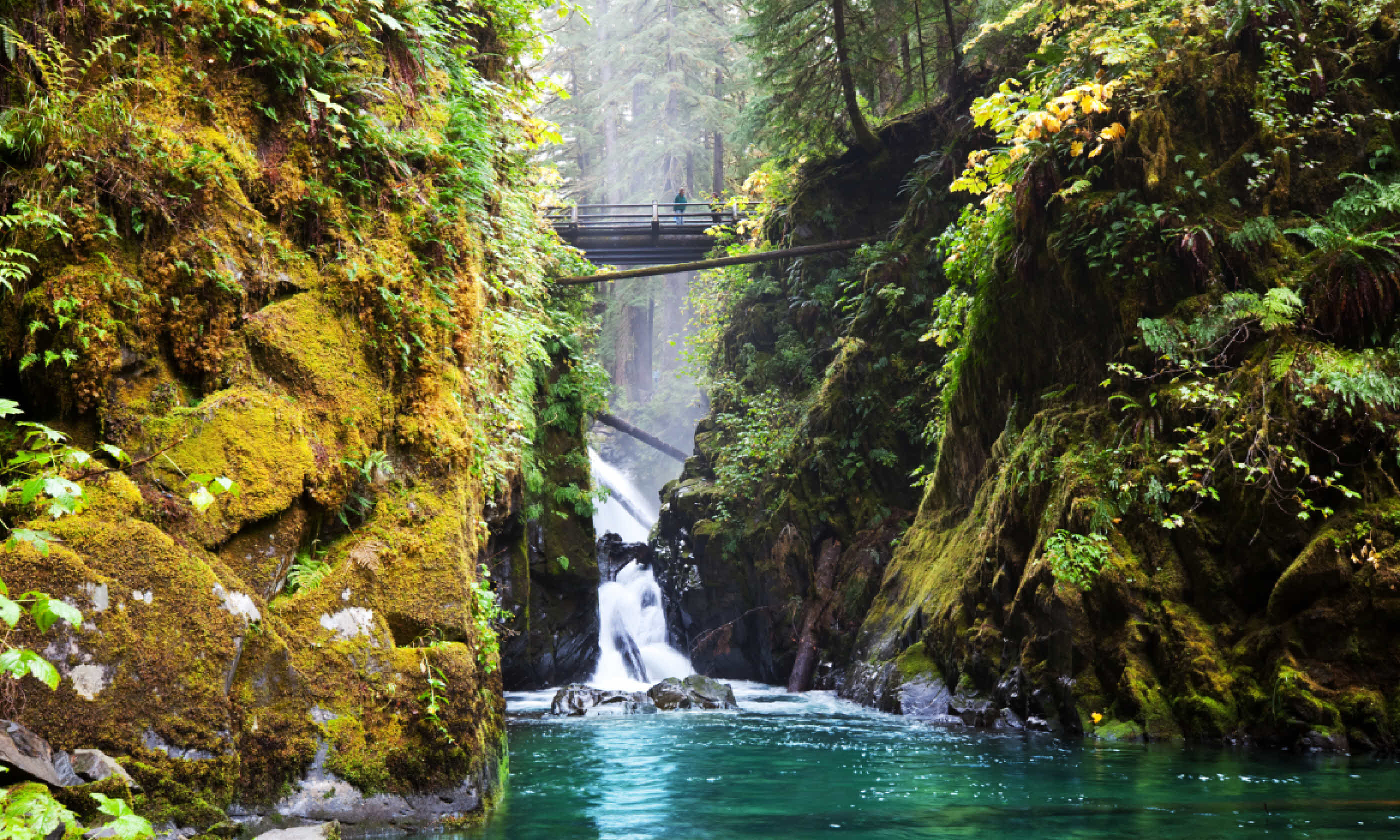
Sol Duc waterfall
In the Pacific section, hit the 27km South Coast Wilderness Trail – it involves climbing ladders, fording creeks and waiting out tides, but the pay off is access to some of the park’s most impressive shores.
When to go: Open year-round, though some roads and campsites close outside summer months.
Plan your trip: Olympic is just west of Seattle. Try a classic two-week roadtrip: Seattle-San Francisco, via Olympic, Portland, the Oregon coast, Redwood NP and Napa. www.nps.gov/olym
Why go? Cuyahoga Valley is Ohio’s only national park, and attracts people in their droves: over two million visited the park’s waterfalls, steep ravines and caves in 2013. But what is it about this ‘crooked river’ valley that’s so enticing?
For most, it’s all about the trails – there are 200km of them. For a good taster, hike or bike the 32km Towpath Trail, which follows part of the old Ohio & Erie Canal. Visitors can also fish, bird-watch, picnic, canoe, kayak and visit historic sites. Winter provides a fresh list of activities, from snowshoeing or sledding to ice fishing.
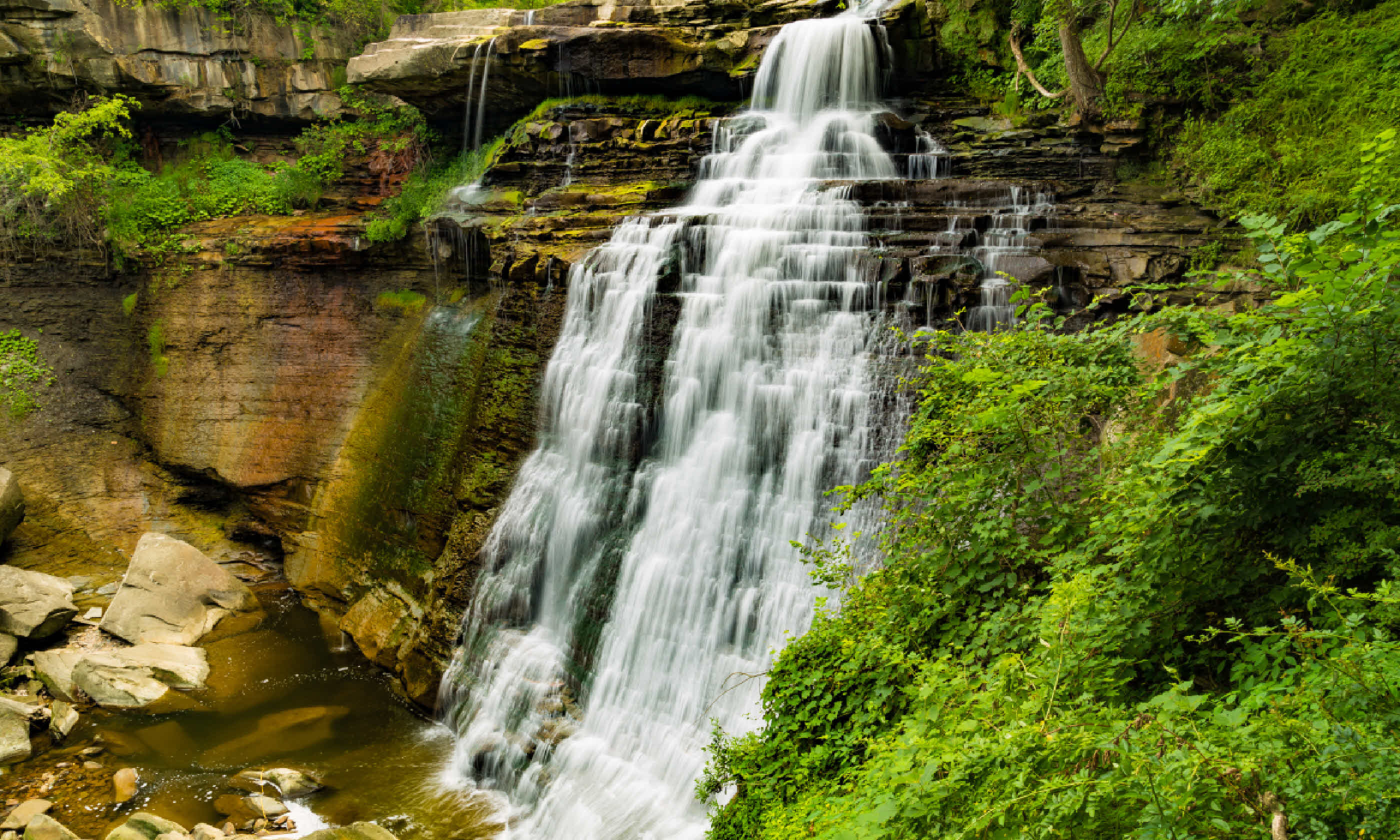
Brandywine Falls in Cuyahoga National Park (Shutterstock)
When to go: Open year-round. Trails can be crowded on the weekends, especially in the spring and summer. Fall colours peak mid-October.
Plan your trip: Start a seven-day round-trip in Chicago, passing through Grand Rapids, Pittsburgh and Cleveland, before reaching Cuyahoga. En route, you could stop off at several state parks along Lake Michigan, as well as the Rock and Roll Hall of Fame in Cleveland. www.nps.gov/cuva
Why go? This south-west Texan stunner does exactly what is says on the tin, named for the grand curve of the Rio Grande that lies within its boundaries. It is a place of remote and rare beauty, where the Chihuahuan Desert is at its most dramatically carved, colourful and wildlife-rich.
More than 1,200 species of plants, 75 species of mammals, 450 species of birds and 56 species of reptiles can be found here. Particularly good bird spots include the Sam Nail Ranch and Blue Creek, in the foothills of the Chisos Mountains.
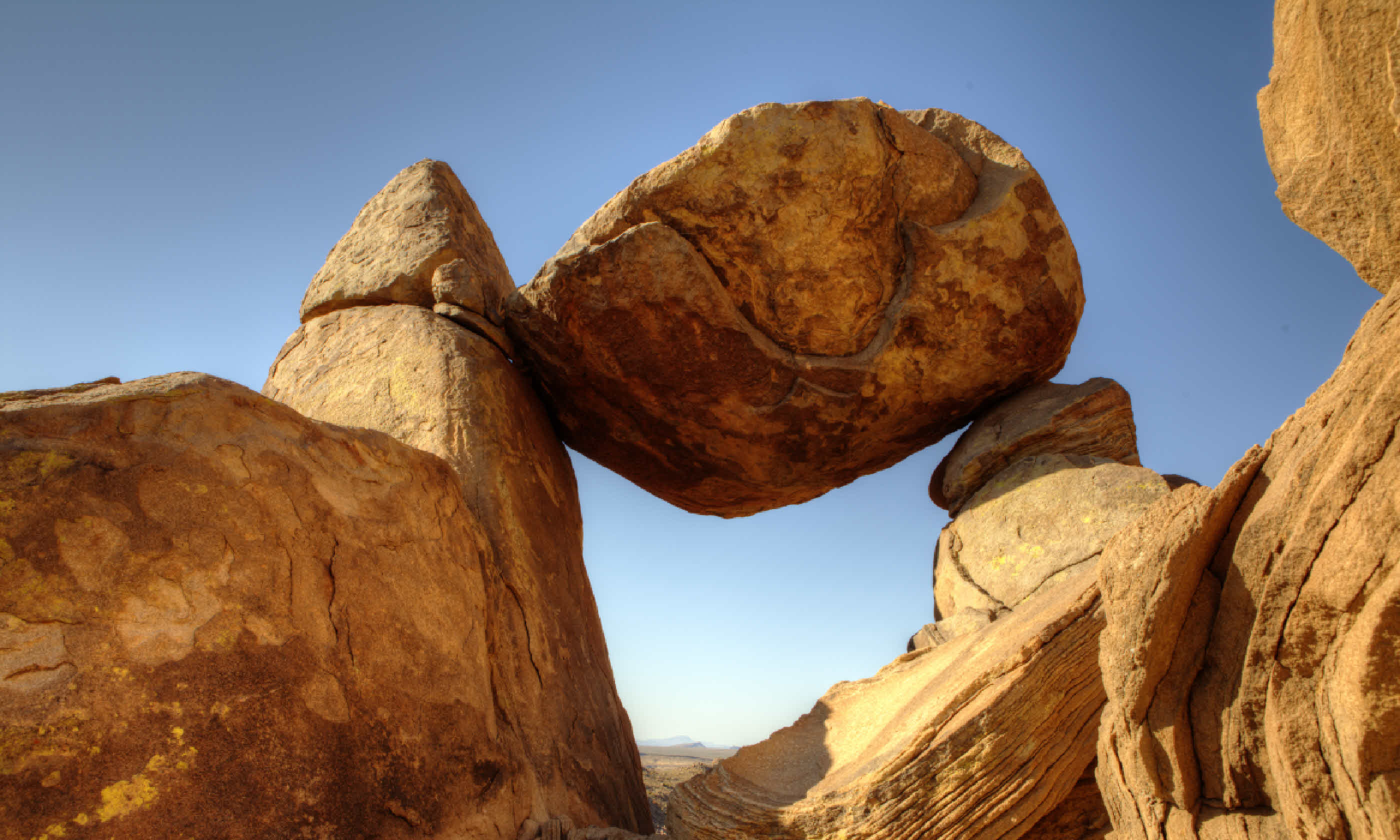
Big Bend National Park
You might encounter wildlife on some of the park’s 240km of hiking trails too, which include paths amid the forested Chisos and out into the desert, to canyons, cacti, mesas and oases. However, the best way to gorge-gaze is on a river trip: half-day or multi-day floats on the Rio Grande can be arranged.
When to go: The park is busiest November-April. Desert plants usually bloom late February-late April and July-August.
Plan your trip: Big Bend is 1,050km west of Houston. Got a month? Pay a visit while crossing the States’ bottom: Miami to San Diego, via New Orleans, Texas, the Grand Canyon and Vegas. www.nps.gov/bibe
Why go? Did we mention the bears? Few places beat Katmai for bruin viewing. Around 2,200 brown bears inhabit this realm of steaming volcanoes, pristine lakes, wild Pacific coast and untouched tundra.
One the park’s best places for bear-watching is Brooks Camp, where the animals gather to feed on sockeye salmon in the Brooks River. Three waterside platforms offer up-close viewing. Other locations include Hallo Bay (where Hallo Bay Bear Camp comes highly recommended), Moraine Creek and Geographic Harbor.
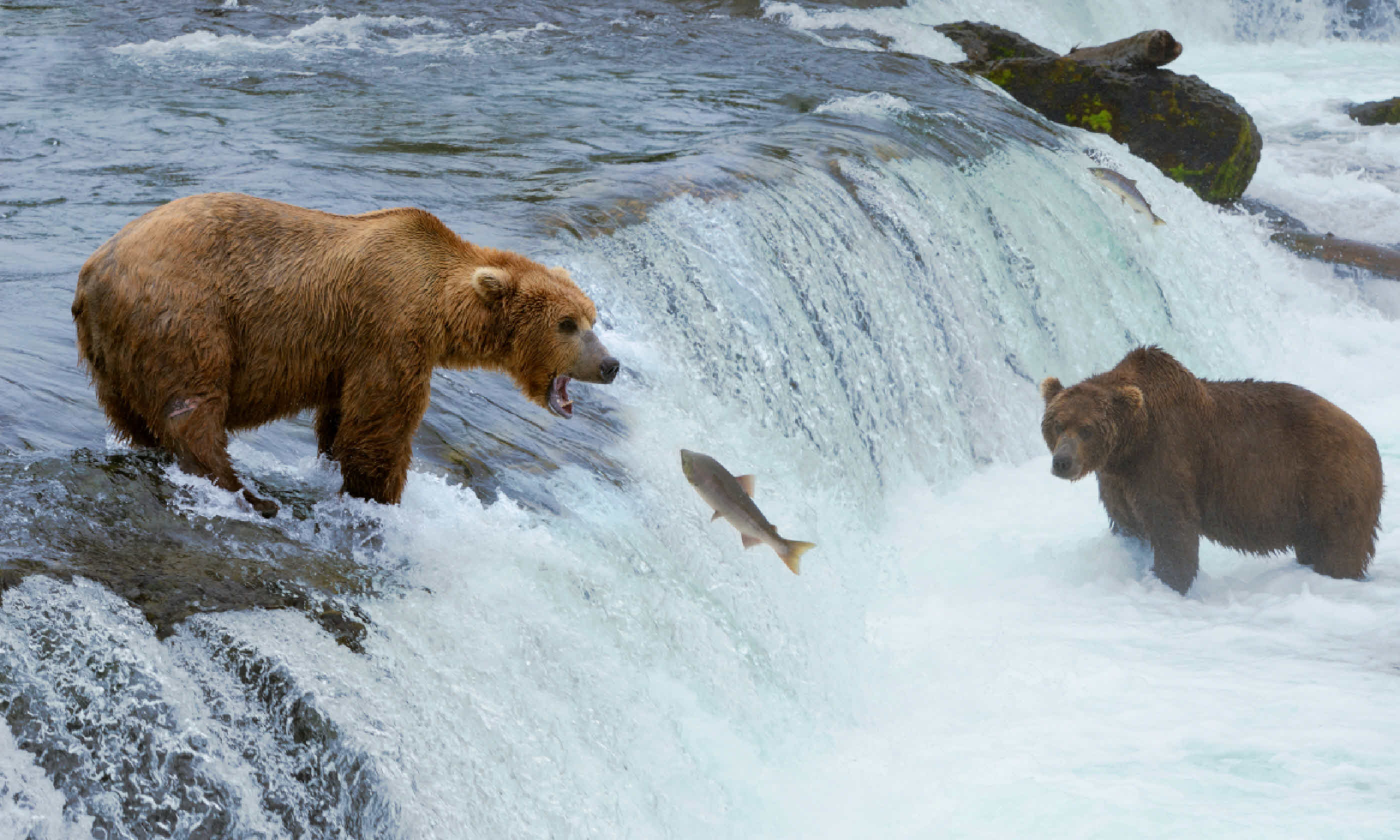
A grizzly bear hunting salmon at Brooks falls (Shutterstock)
Kayaking, boating and hiking are all wild and wonderful here, but flightseeing is the only way to grasp the scale of the place; trips leave from hubs such as Anchorage, Homer and Kodiak. Peer into the craters of the Aleutian Range, make out vast schools of salmon and, with luck, spot bears.
When to go: Open year-round. Backcountry activities are best June-September. Prime bear-viewing months at Brooks Camp are July and September; coastal bear-watching is possible June-August.
Plan your trip: Park HQ is in King Salmon, a one-hour flight from Anchorage. Combine Katmai with Lake Clark (see no 2), or Kodiak National Wildlife Refuge for more bears. www.nps.gov/katm
Why go? Haleakalā means ‘house of the sun’ – according to legend, it was on the top of this giant shield volcano that the demigod Maui captured the sun, letting it go only after it promised to lengthen the day.
It certainly feels like the realm of otherworldly beings: the park, located in south-east Maui, comprises a lush coastal section at Kipahulu Valley and the eerie slopes of the 3,055m dormant volcano, a cinder desert of sculptural rocks, crazy colours and hardy native wildlife.
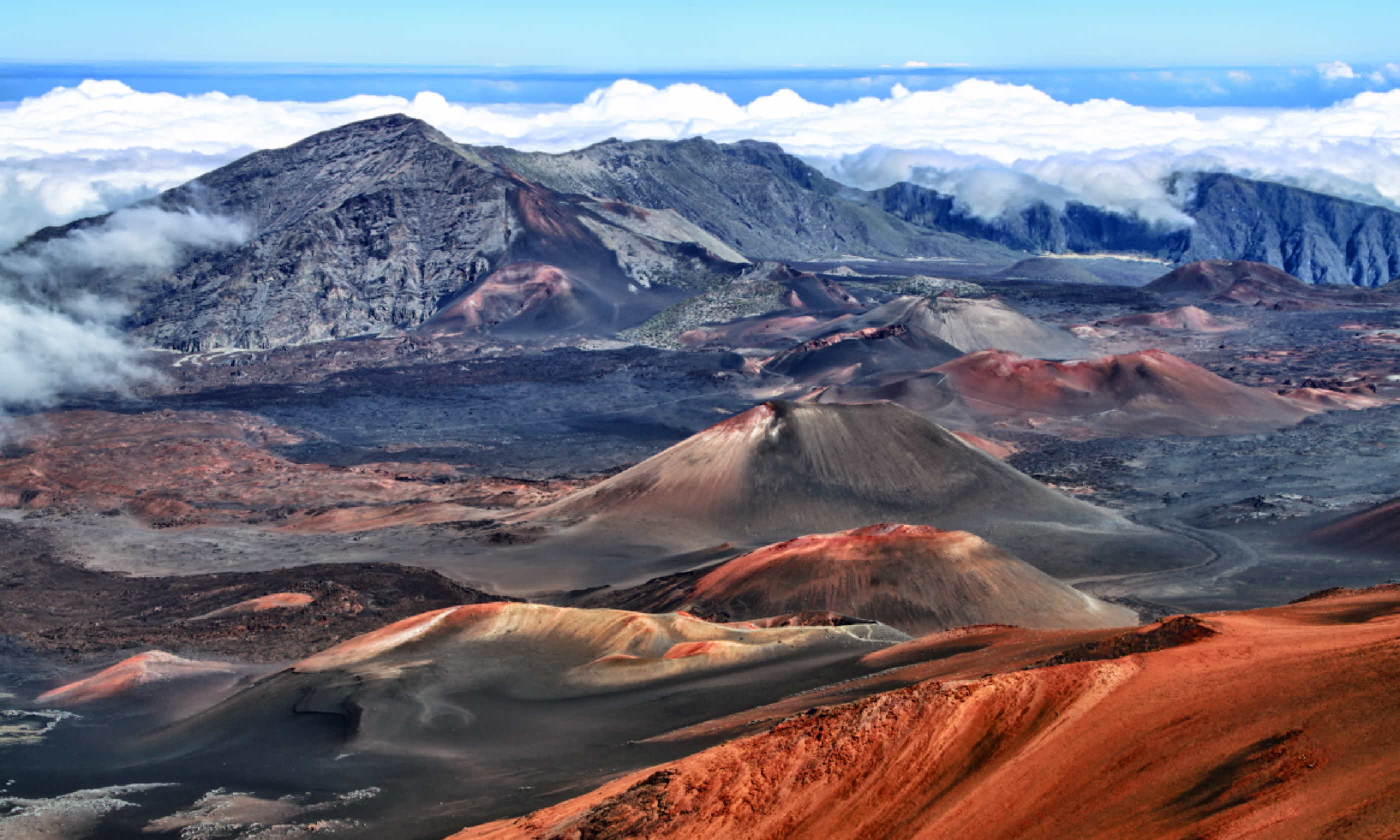
Caldera of the Haleakala volcano
There’s a steep road up to the Summit Area, and ranger-led activities can provide more insight. However, the best way to explore is on foot – trails range from 400m ambles to overnight hikes. Wilderness campgrounds and cabins allow you to stay on the volcano – which is a great thing, as the sunrises, sunsets and pollution-free star-gazing are spectacular; even if it’s cloudy, you might see rainbows and moonbows.
When to go: Open year-round. Temperatures are fairly constant, but the climate is drier April-October.
Plan your trip: Maui is a 30-minute flight from Big Island; Haleakalā’s Summit Area is a 90-minute drive from Kahului Airport. Plan a two-week self-drive stay on Maui and you can see the lot – including the waterfall-splattered coast drive from Pa’ia to Hana, snorkelling with turtles at Malu’aka Beach and humpback watching off the west coast (Dec-Apr). www.nps.gov/hale
Why go? No facilities, no fees, no tracks, no rules. If you’re ready to go all Ray Mears – just you and the rugged wildlife – this is the place to do it. Wild rivers slice through glacial valleys; grizzlies, moose and wolves roam; the aurora dances across wintry night skies while the midnight sun lights up summer.
Gates of the Arctic is named for the two peaks (Frigid Crags and Boreal Mountain) that straddle the North Fork of the Koyukuk River, like a portal to another world. And that world is your oyster, if you have the survival skills. Arrange to be flown in, then hike across the ridge-tops and tundra, fish in alpine lakes, watch migrating caribou in the northern valleys or camp alongside clear rivers.
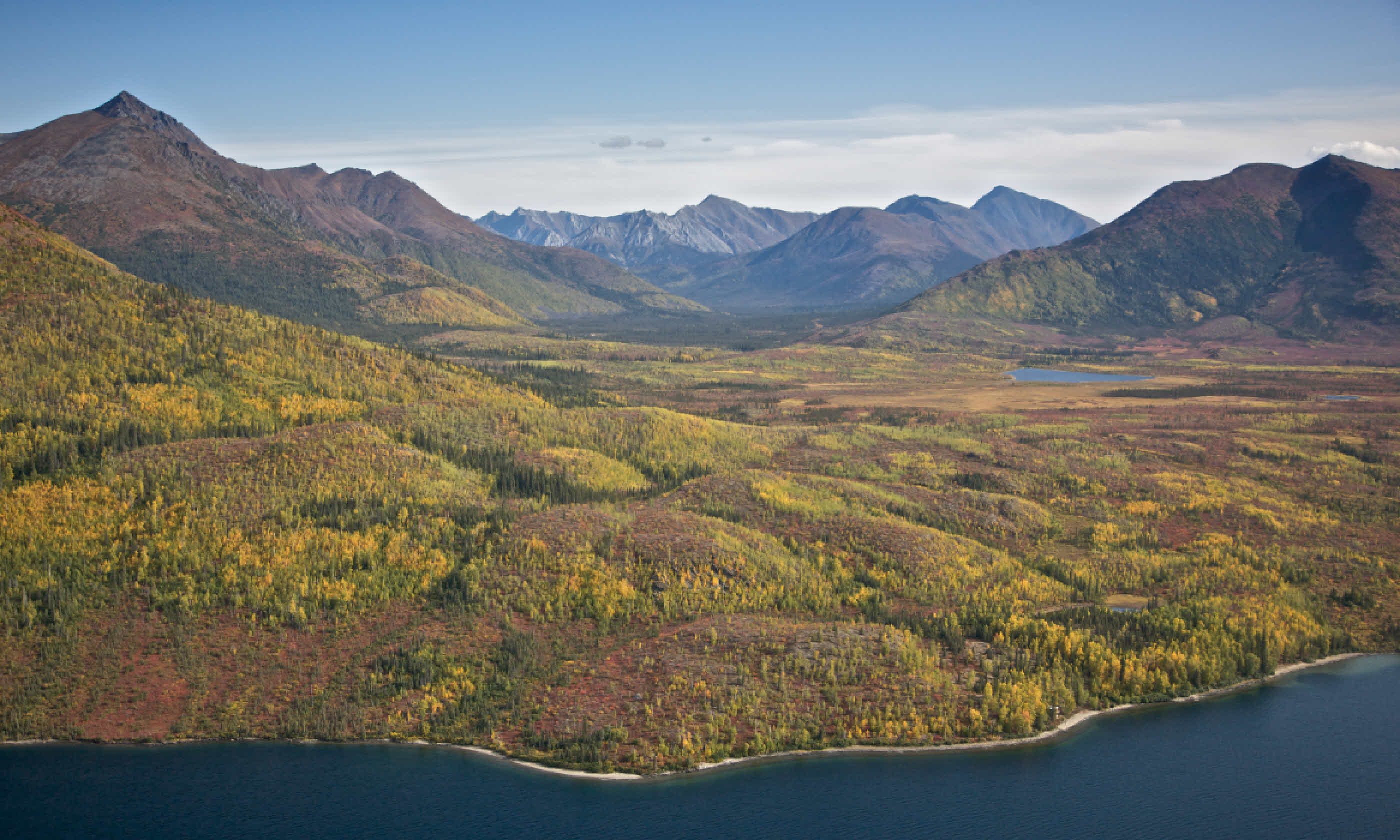
Alaskan mountain valley (Shutterstock)
When to go: Open year-round. The best, safest, time to visit is June-August.
Plan your trip: Two weeks in the Gates of the Arctic will test your survival skills. Local air taxis provide flightseeing trips, day trips or overnight camp-outs at remote locations, but most people fly in on floatplanes and spend a week or more exploring here with a guide. www.nps.gov/gaar
Why go? Dry Tortugas is the realm of the sea turtle; the creature even gave the archipelago its name (tortuga is Spanish for turtle). Five species – loggerhead, Kemp’s ridley, hawksbill, green sea and leatherback – frequent the warm waves of this underwater national park, and can sometimes be seen, breaking the surface to breathe.
Reef-studded and scattered across the Gulf of Mexico – closer to Cuba than the US – the park comprises seven islands that are only accessible by boat or seaplane. This isolated marine paradise is ideal for water babies, who can snorkel and dive in its crystal-clear waters; boating and hiking tours are available too.
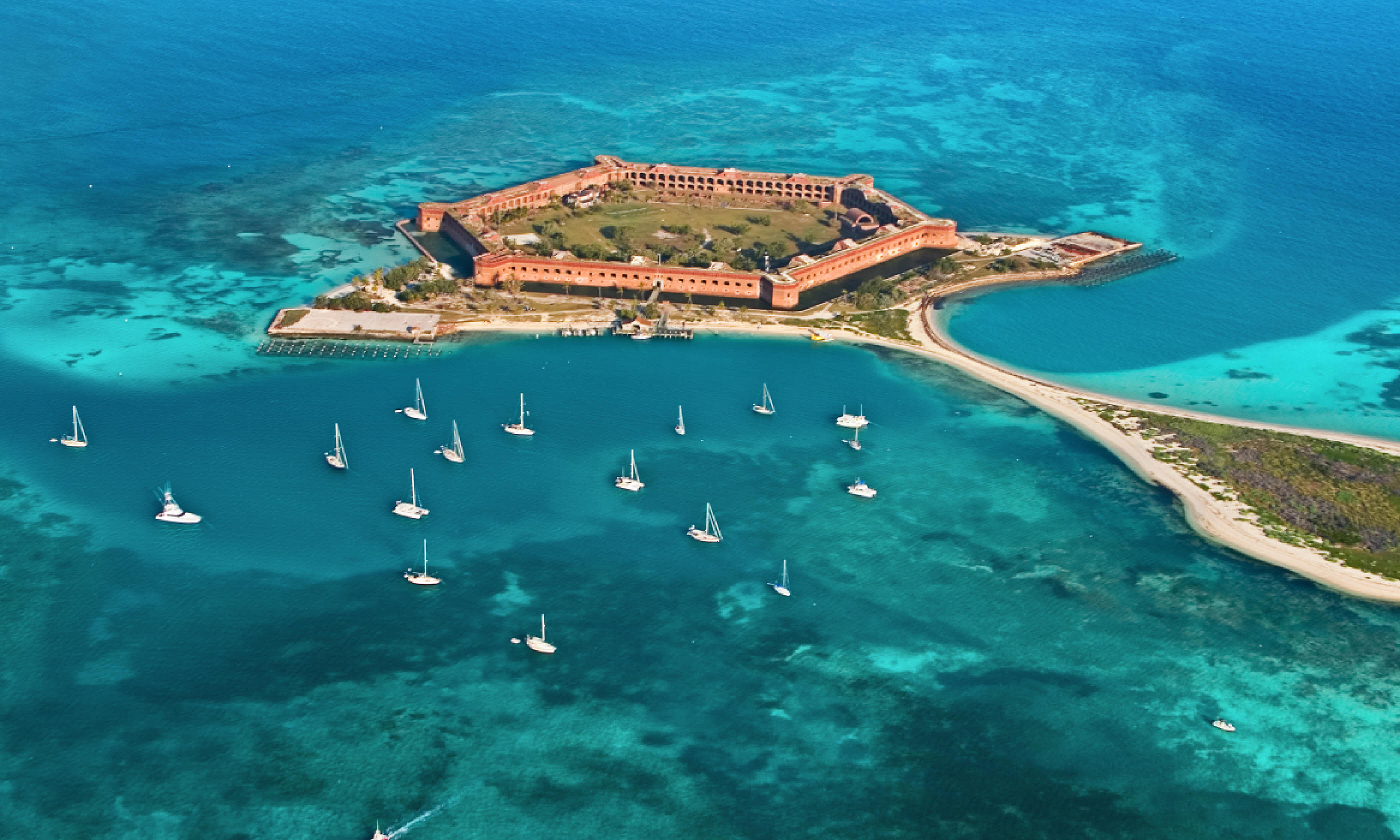
Dry Tortugas National Park
The park is also home to Fort Jefferson, the largest masonry fort in the Americas, built between 1846 and 1875 to protect the USA’s access to the Gulf. Take a tour, then camp right by the fort for majestic sunsets.
When to go: Open year-round, though some keys close during certain months. The rainier summer season (May-October) is the best time to visit, with warmer, calmer waters and good visibility for snorkelling and diving.
Plan your trip: Fly to Key West via Miami. Boats depart from Key West Ferry Terminal to Dry Tortugas daily. Include the park in a wider south Florida trip: Key West (visit Ernest Hemingway’s house), cool Miami and the croc-rich Everglades. www.nps.gov/drto
Why go? Shenandoah is a capital escape: this protected piece of the Blue Ridge Mountains is less than 100km from Washington DC; the fresh, forested wilderness is the perfect antidote to all those political machinations.
This handy location means Shenandoah has plentiful facilities (lodges, restaurants, campsites) and can get crowded at times; come fall, the showstopping Skyline Drive, which follows the mountain ridge, gets congested with leaf-peepers. But there are 800km of trails (including a section of the 3,500km Appalachian Trail), so it’s easy to lose the masses.
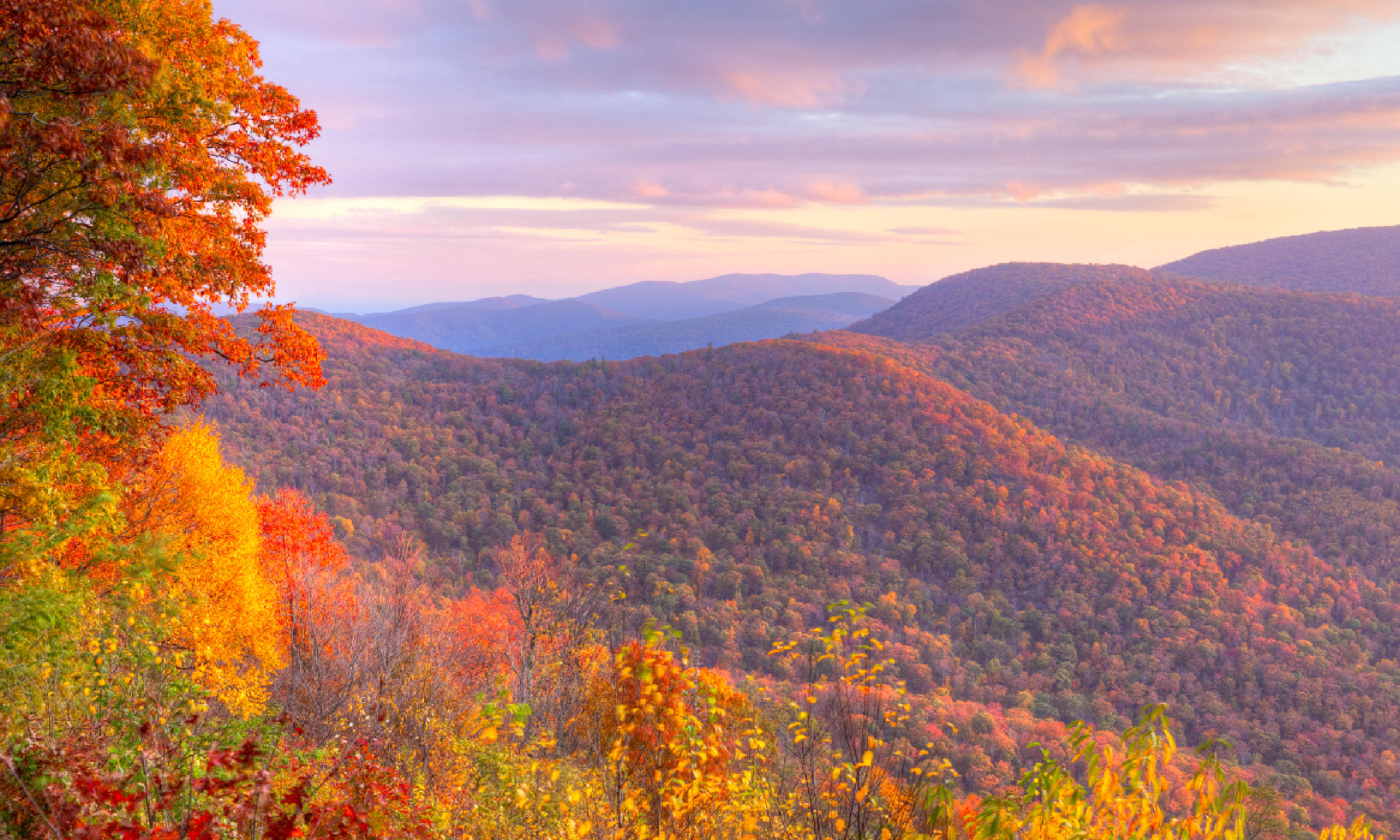
Shenandoah National Park (Shutterstock)
When to go: Open year-round. Autumn is busy. Spring brings wildflowers.
Plan your trip: The park is 90km west of Washington Dulles airport. Visit the capital’s sights, head to Shenandoah then follow the Blue Ridge Parkway to Great Smokey Mountains NP. Finish in Charleston or further south in charming Savannah, Georgia. www.nps.gov/shen
Why go? The Colorado River isn’t responsible for only the Grand Canyon – in southern Utah, this artistic waterway has carved a dramatic array of rust-red gorges, buttes and pinnacles that have been collected into Canyonlands National Park.
The park comprises four districts. The Island in the Sky, a lofty mesa with magnificent views over the park’s plunging depths, is the most accessible, and easily seen via a scenic drive; this is also where you’ll find the 160km White Rim Road – mountain-bike heaven.
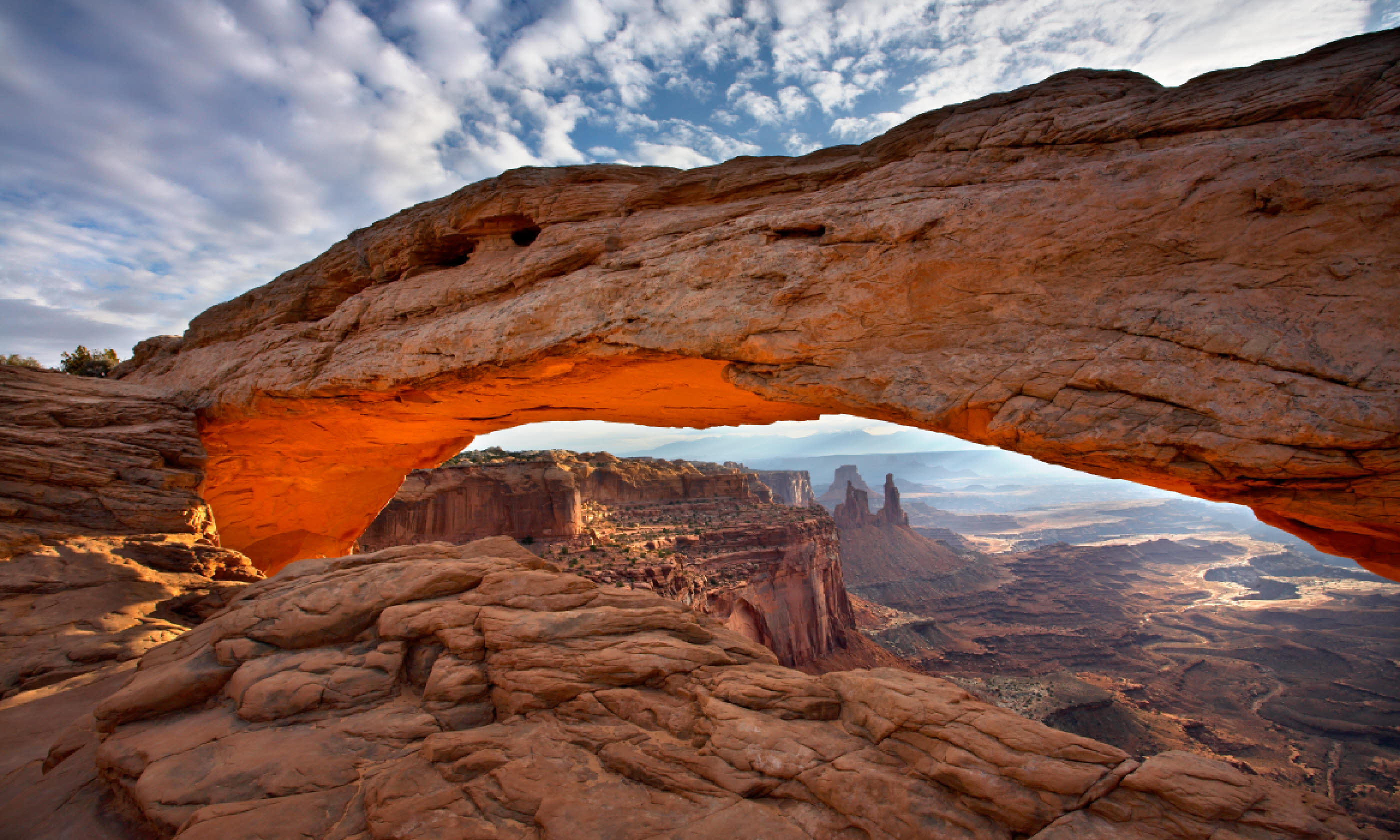
Mesa Arch (Shutterstock)
The Needles is named for the striped Cedar Mesa Sandstone that dominates the area, and is ideal for day-hikes; there are also several campsites here. The burnt-orange canyons of the Maze are remote and best for wild multi-day 4WD adventures. The River regions offer both calm floats and, below the confluence of the Colorado and Green rivers, more raging rafting.
When to go: Open year-round. Temperatures are most pleasant in spring and autumn; summers are hot and stormy. High water for rafting is May-June.
Plan your trip: Canyonlands is just south-west of Moab, and 400km south of Salt Lake City. Include it in a two/three-week Four Corners roadtrip to absorb the Wild West landscapes and Native American culture of Utah, Arizona, Colorado and New Mexico. www.nps.gov/cany
Why go? Welcome to the world’s largest known cave system, 645km of passages, grottoes and underground extraordinariness. Human remains dating back over 4,000 years have been found inside, suggesting man has always been curious; luckily, taking a peep is now much easier.
There is a range of guided cave tours, of differing strenuousness, that visit pits, passageways and rock formations. The six-hour Wild Cave Tour is the most hair-raising, a chance to crawl and squeeze through usually off-limits areas.
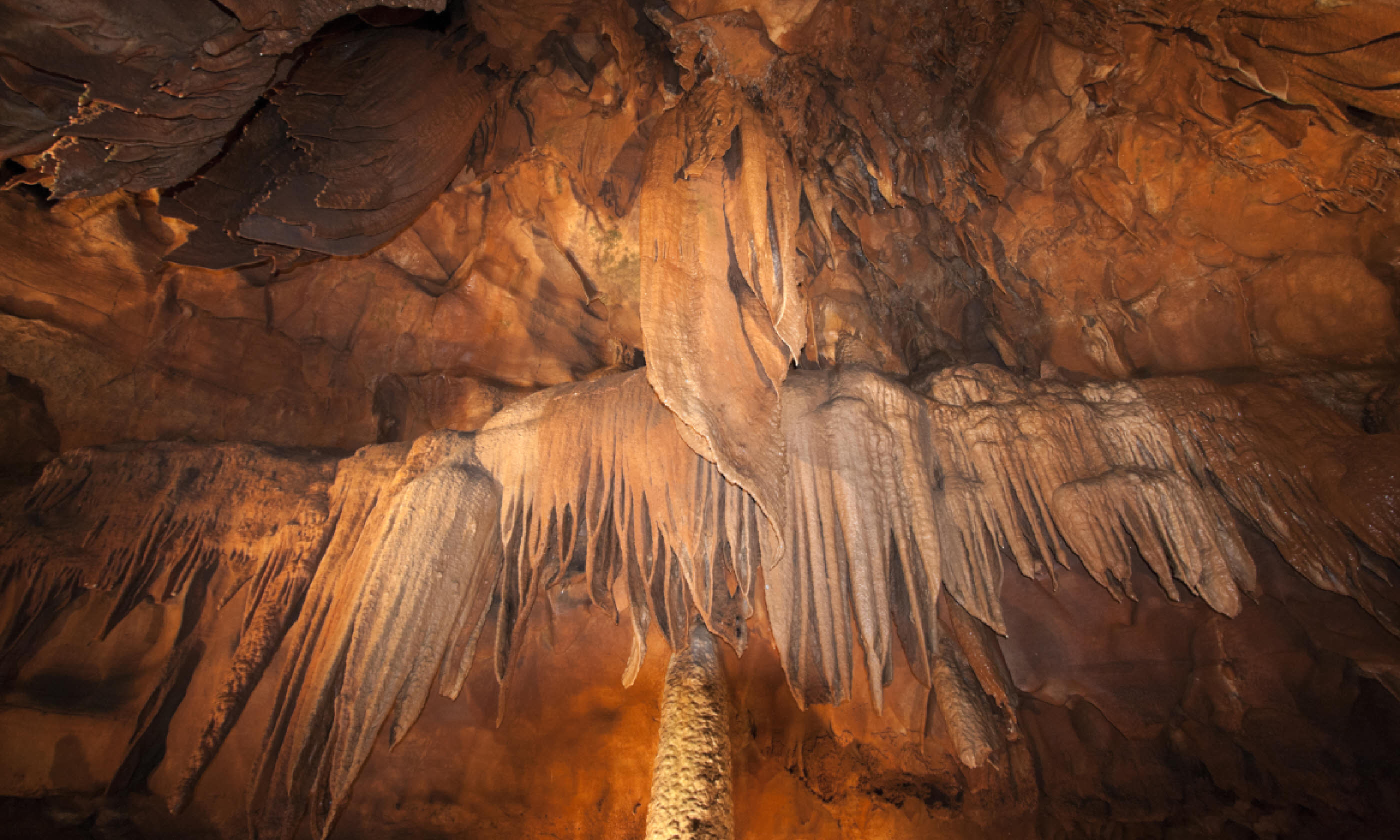
Mammoth Cave National Park (Dreamstime)
For the claustrophobic, the park also offers surface adventures. Paddle on the Green River, which helped sculpt this karst landscape into subterranean Swiss cheese, or explore by bike or on horseback. The Mammoth Cave Hotel offers an in-park alternative to camping.
When to go: Open year-round, though activities vary by season. June-August is busiest.
Plan your trip: Mammoth Cave is 145km south-west of Louisville. You could combine the caves with cool tunes by flying into Cincinnati (Ohio) and out of Atlanta (Georgia), driving via Louisville, Nashville and Chattanooga. www.nps.gov/maca
Why go? Spanning three south-west Pacific islands (Tutuila, Ofu and Ta’u), the National Park of American Samoa is the only US park that lies south of the equator. The emphasis here is on protecting Polynesian culture as well as the mountainous, volcanic, rainforest-draped, reef-laced, wildlife-rich landscapes.
Access is time-consuming and facilities are limited, but natural wonders are in abundance. For instance, you’ll need to bring your own snorkel/dive gear, but the rewards are pristine corals, over 950 species of fish plus whales and green turtles.
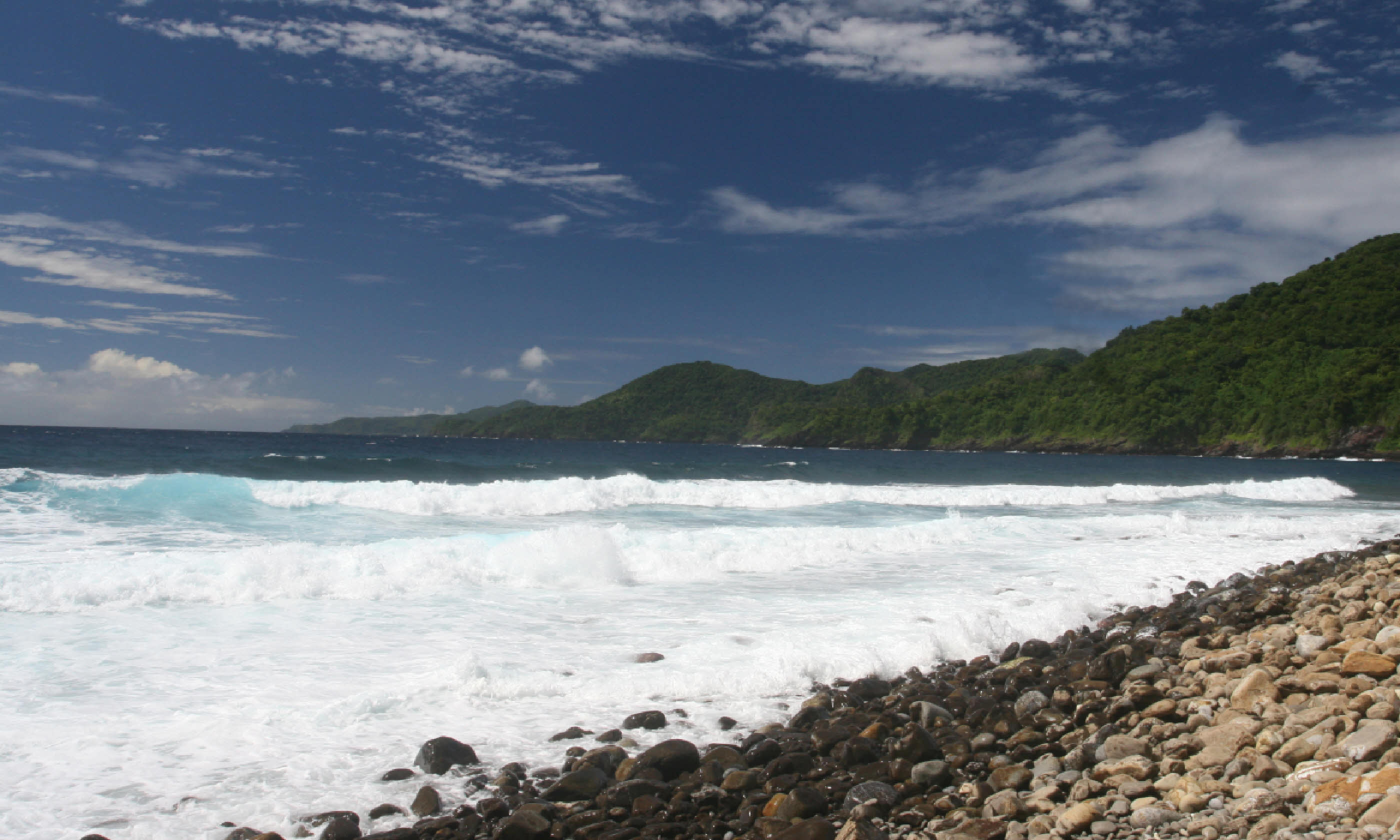
Tutuila Island
For the best cultural interaction, use the park’s homestay programme: sleep in a traditional fale guesthouse, eat Samoan specialties, catch fish and learn to weave mats from pandanus leaves.
When to go: Open year-round. May- September is the driest period. Humpbacks may be seen August-November.
Plan your trip: Hawaiian Airlines flies direct to American Samoa’s Tutuila Island from Honolulu. More airlines fly to Western Samoa, from where connections are available. Small planes serve Ta’u; local boats link Ta’u to Ofu. www.nps.gov/npsa
Why go? Guadalupe Mountains is an ‘island in the desert’, a Permian-era reef rearing over 1,500m out of the now dusty wilderness. It’s home to marine fossils, three major ecosystems, eight species of hummingbird and the highest peak in Texas.
Pull on your walking boots and take to the 13.5km Guadalupe Peak Trail, which leads to the summit of the 2,667m Guadalupe Peak – the ‘Top of Texas’ – for panoramic views of the Chihuahuan Desert.
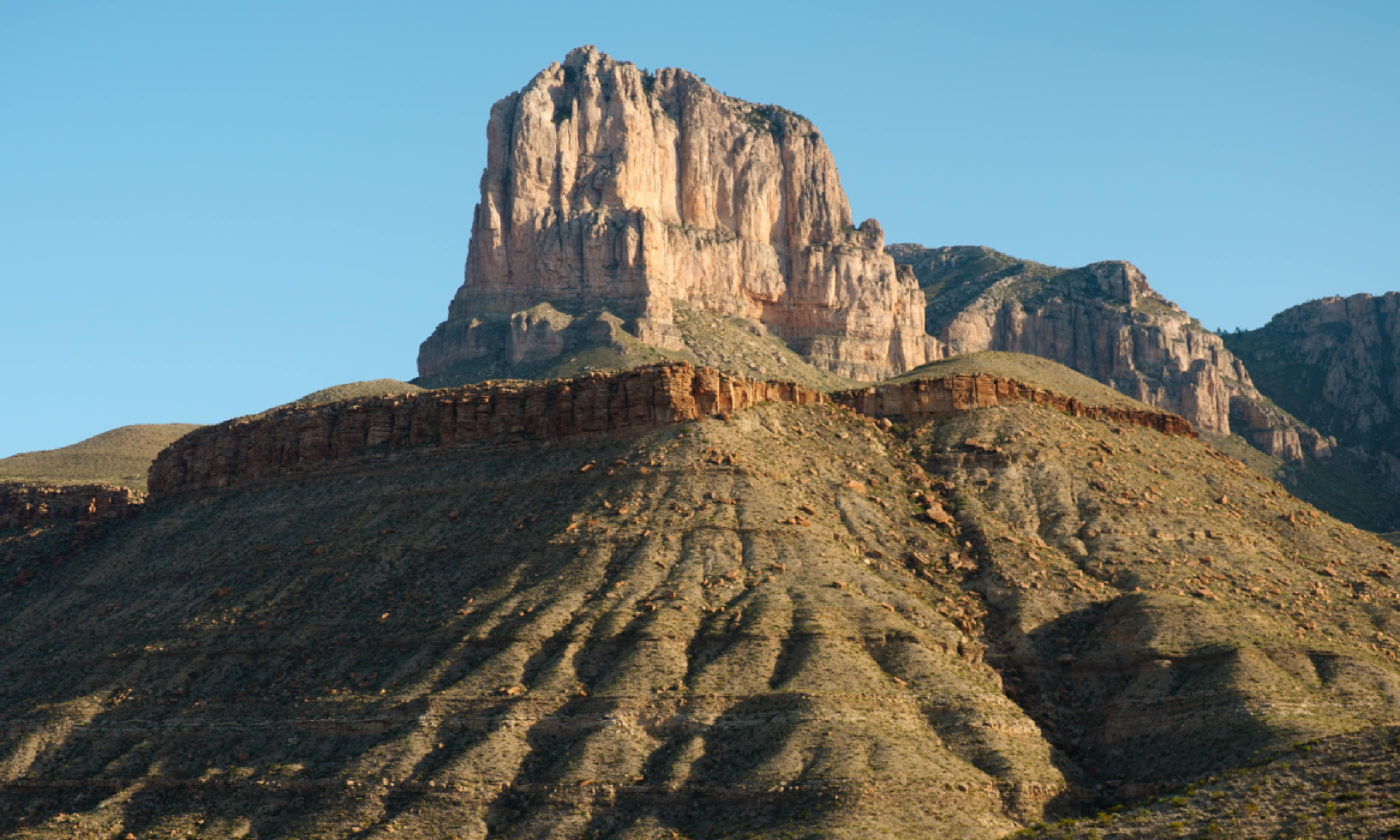
El Capitan mountain peak (Shutterstock)
There are also routes through limestone canyons, maple and oak woodlands, and coniferous forests of Douglas fir or pinyon pine; many of the trails are open to horse-riders too. Birders should head for Frijole Ranch and McKittrick Canyon.
When to go: Open year-round. Visit in spring, when flowers are blossoming, or autumn, for fall colours.
Plan your trip: Guadalupe Mountains is 180km from El Paso. It is also close to Carlsbad Caverns, making it easy to combine the two. If you have two weeks, consider flying into Las Vegas, heading to the Grand Canyon, and then veering east into New Mexico and Texas for Guadalupe. www.nps.gov/gumo
Why go? Foragers and fishermen may have appreciated it in prehistoric times, but Congaree was only granted national park status 11 years ago. Its swamp-like waterways, flanked by an eerie canopy of towering sun-blocking trees, are a haven for wildlife. Bobcats, feral pigs and armadillos roam, but it’s the birdlife – from the tufted titmouse to the noisy yellow-bellied sapsucker – that really thrives here.
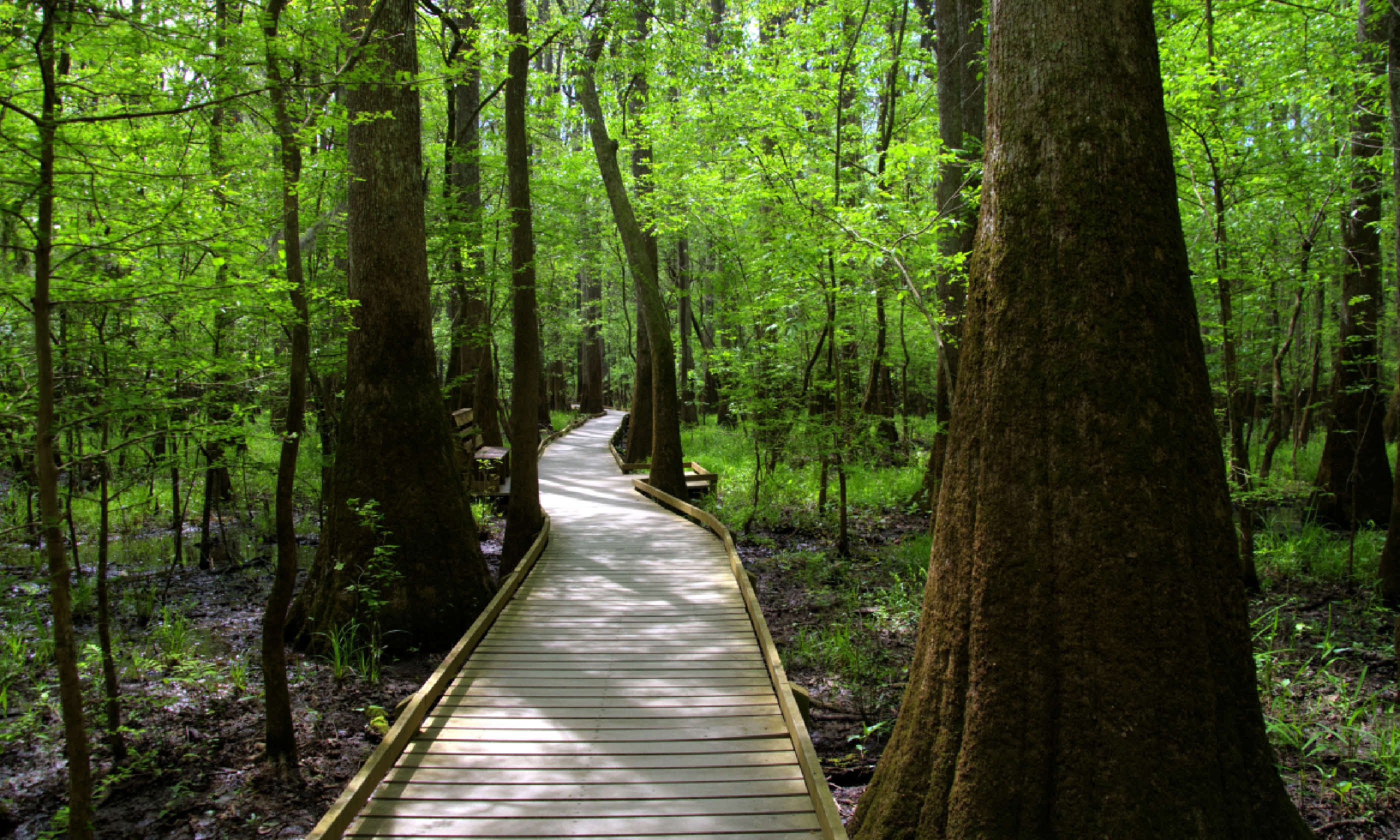
Congaree National Forest
Experience the cacophony of birdcalls on foot or from the comfort of a canoe and you’ll also get up-close to this bottomland forest, one of the USA’s largest left. Canoe rides are usually free on weekends and, as you paddle through this dense wilderness dwarfed by the tallest loblolly pines alive (51m), you may even spot otters, white-tailed deer and racoons along the banks of Cedar Creek.
When to go: Open year-round. Avoid the rainy summer months as some trails get washed away.
Plan your trip: Congaree is a 90-minute drive from Charlotte Douglas airport; you can fly there direct from Heathrow. Add a visit to Charleston 160km south-east, to explore the city and snorkel with dolphins around the offshore islands. www.nps.gov/cong
Why go? Designated a World Biosphere Reserve in 1976, Glacier is postcard-perfect Rocky Mountain wilderness, full of lush forests, wild meadows, azure lakes and icy peaks. Hollywood agrees: more than 35 films have been shot in the park – including Stephen King classic, The Shining.
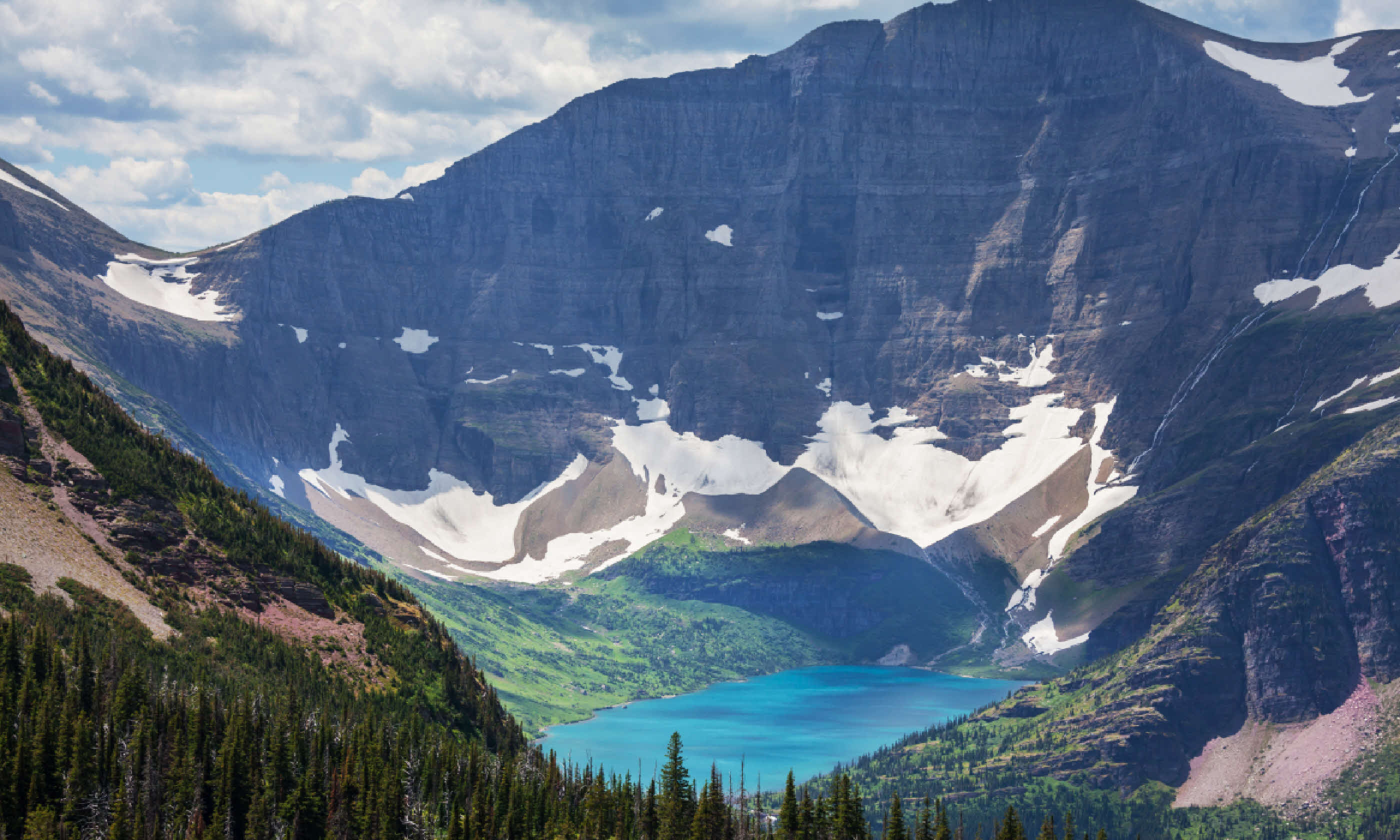
Glacier National Park, Montana (Shutterstock)
There are over 1,100km of walking trails, numerous campsites and opportunities for boating and biking. You don’t even need to get out of your car (though you should): the 80km Going-to-the-Sun Road, the only road that crosses the park, intersects the 2,026m continental divide at Logan Pass and offers sweeping views. In winter, skis and snowshoes provide access to much of the park, in all its icy, uncrowded glory.
When to go: Open year-round. Autumn is colourful and quieter than peak summer months; winter offers great snow sports.
Plan your trip: The park is 48km from Glacier Park International Airport, near Kalispell, which is served by flights from Salt Lake City. In a two-week trip, you could fly into Seattle, drive east to Glacier, then head south via Yellowstone and Grand Teton to Salt Lake. www.nps.gov/glac
Why go? Carlsbad Caverns is a wet wilderness hidden deep beneath the desert. Made up of 119 prehistoric caves, it was forged around the Ice Age when sulphuric acid sizzled through the limestone, creating sculptural stalactites, stalagmites and seemingly impossible rock formations.
Three caves are open to the public. Slaughter Canyon and Spider Cave are both relatively underdeveloped and not nearly as nightmare-inducing as their names suggest.
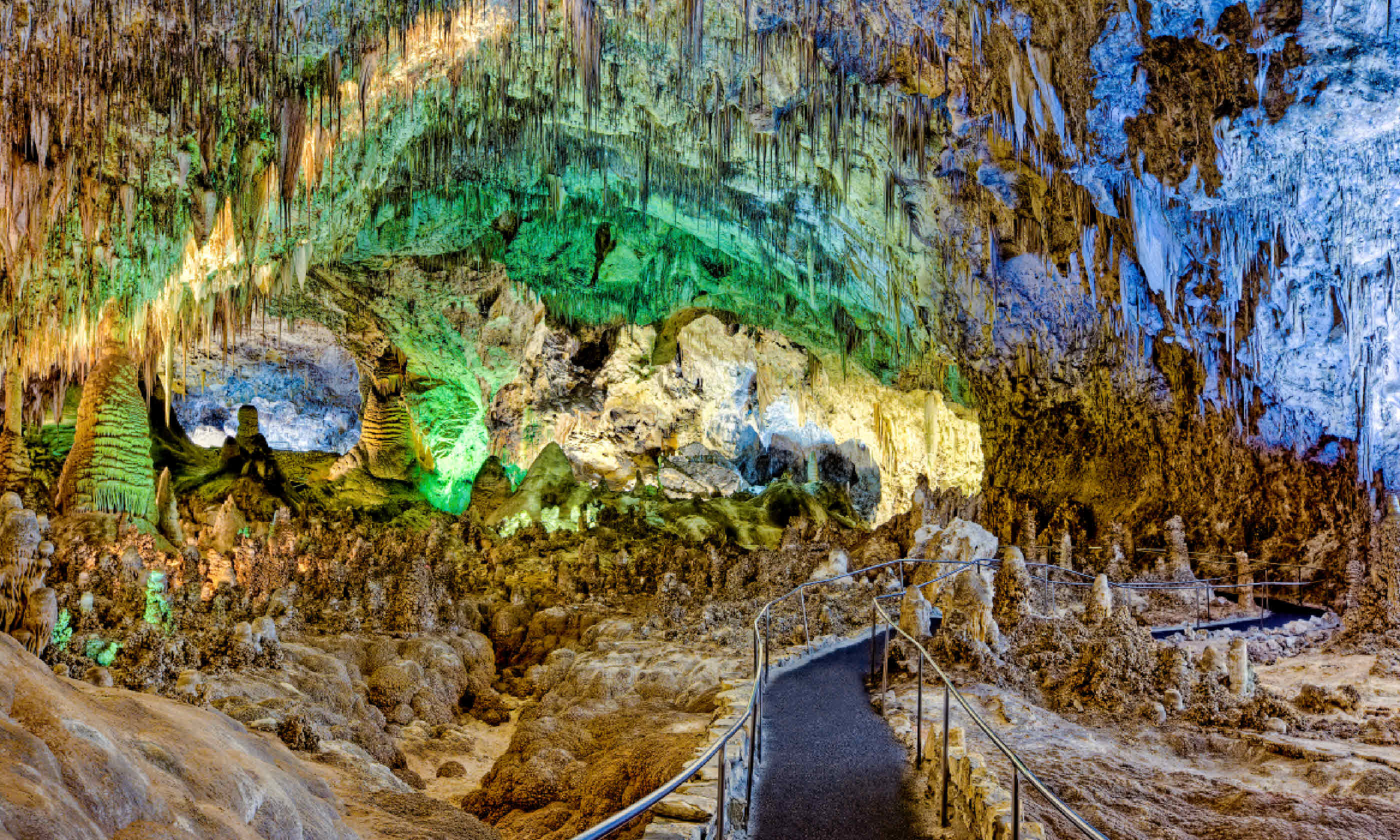
Carlsbad Caverns, New Mexico (Shutterstock)
Visitors can hike along the wet and muddy trails into the caves or take a lift, while the more adventurous can pothole past transparent pools and cave pearls, or rappel through minuscule gaps. And for those who really fancy a deep thrill, there’s a selection of wild cave tours with no trails or lights.
When to go: Open year-round. Desert wildflowers bloom March-April and October-November. The best bat flights are in July and August.
Plan your trip: Fly in to Albuquerque for a two-week driving tour of this diverse state. Head to the Chihuahuan Desert for the world’s largest field of blinding-white sand dunes and to supernatural Roswell for a UFO tour. New Mexico is renowned for its clear skies too, so expect super stargazing. www.nps.gov/cave
Why go? No giftshops, no campsites, no roads, no trails: Kobuk Valley, which nudges inside the Arctic Circle, is proper wild-man backcountry. Here, you have to make – and survive – your own adventure; it is not for the unprepared.
Getting in is tricky: planes are often the only ways to access villages such as Kobuk, Shungnak or Ambler – all good points to start a self-sufficient river journey. The easiest way to get an overview is a day’s flightseeing tour; you might even pass over the 500,000 caribou that migrate across the park (north in spring, south in autumn).
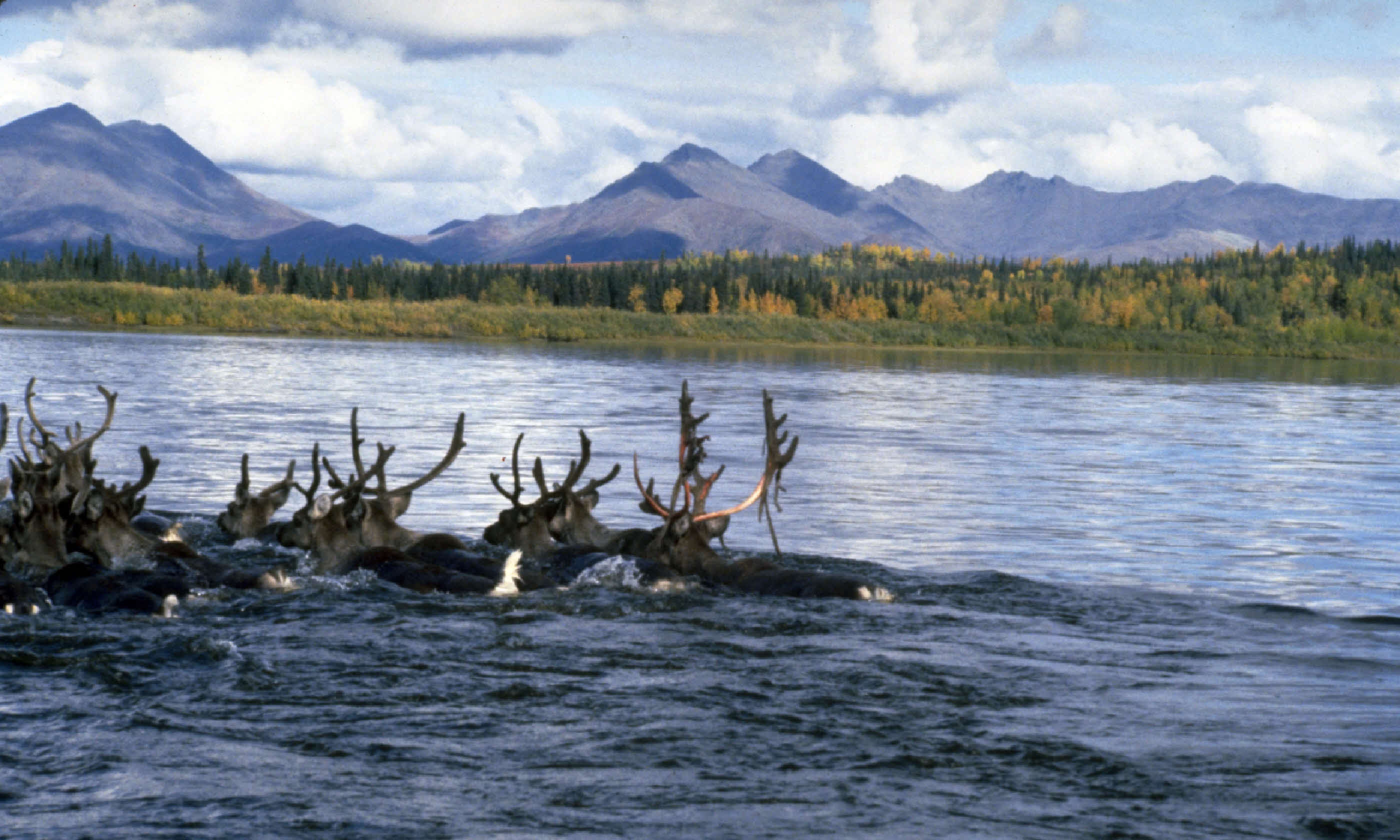
Swimming the Kobuk (Flickr C/C: Education Specialist)
When to go: Open year-round. Mid-August to mid-October has bright skies, fall colours and fewer mosquitoes than the warmer summer months. July-early September is the best time to float the Kobuk River.
Plan your trip: Park HQ is in Kotzebue, which is served by flights from Anchorage. From Anchorage it’s easy to access all other areas in Alaska; for instance, you could take the historic railroad to Denali’s mountains. www.nps.gov/kova
Why go? To get wet: 95% of Biscayne National Park is underwater, so hiking and biking options are limited here. To properly appreciate this protected mass of mangrove, coral limestone keys, offshore reef and 500-plus species of fish, you ideally need to explore by boat or fin. Make a beeline for the unique Maritime Heritage Trail, a snorkel tour that explores the remains of six shipwrecks.
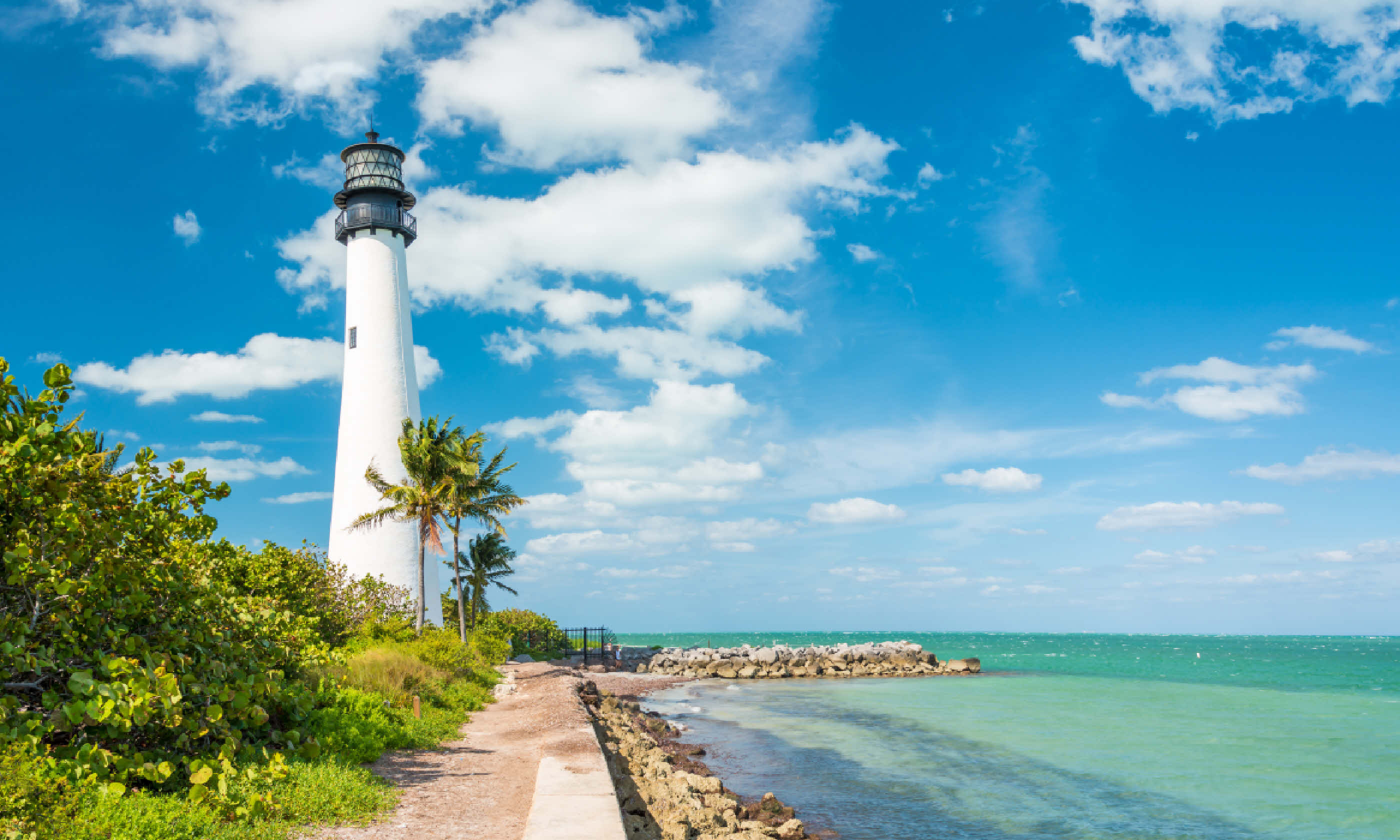
Key Biscayne
When to go: Open year-round. Guided canoe trips run Jan-April; this is also the best time for camping, when there are fewer insects.
Plan your trip: Convoy Point is 50km south of Miami. Linger in the art deco city, and combine a trip to Biscayne with the Everglades and Florida Keys. Or plan an East Coast epic, riding the Amtrak Silver Service train from New York to Miami, via Washington DC, Charleston, Savannah, Jacksonville and Orlando, before hitting Biscayne itself. www.nps.gov/bisc
Why go? The car-less, virtually untouched wilderness of Isle Royale, which floats in the north-west corner of Lake Superior, is officially the least-visited national park of the lower US states. There are a couple of campstores and a lodge, but otherwise this basalt-and-sandstone outcrop is given over to forest, inland lakes, bogs and wildlife.
Just getting here – by boat or seaplane – is half the fun. Exploring is best by canoe or kayak, using the basic campsites en route. The park comprises not just Isle Royale but 450 smaller islands, plus numerous bays and waterways; navigating these reveals secret beaches and coves plus wading moose, otters, ducks and more – it’s not uncommon to hear wolves howl.
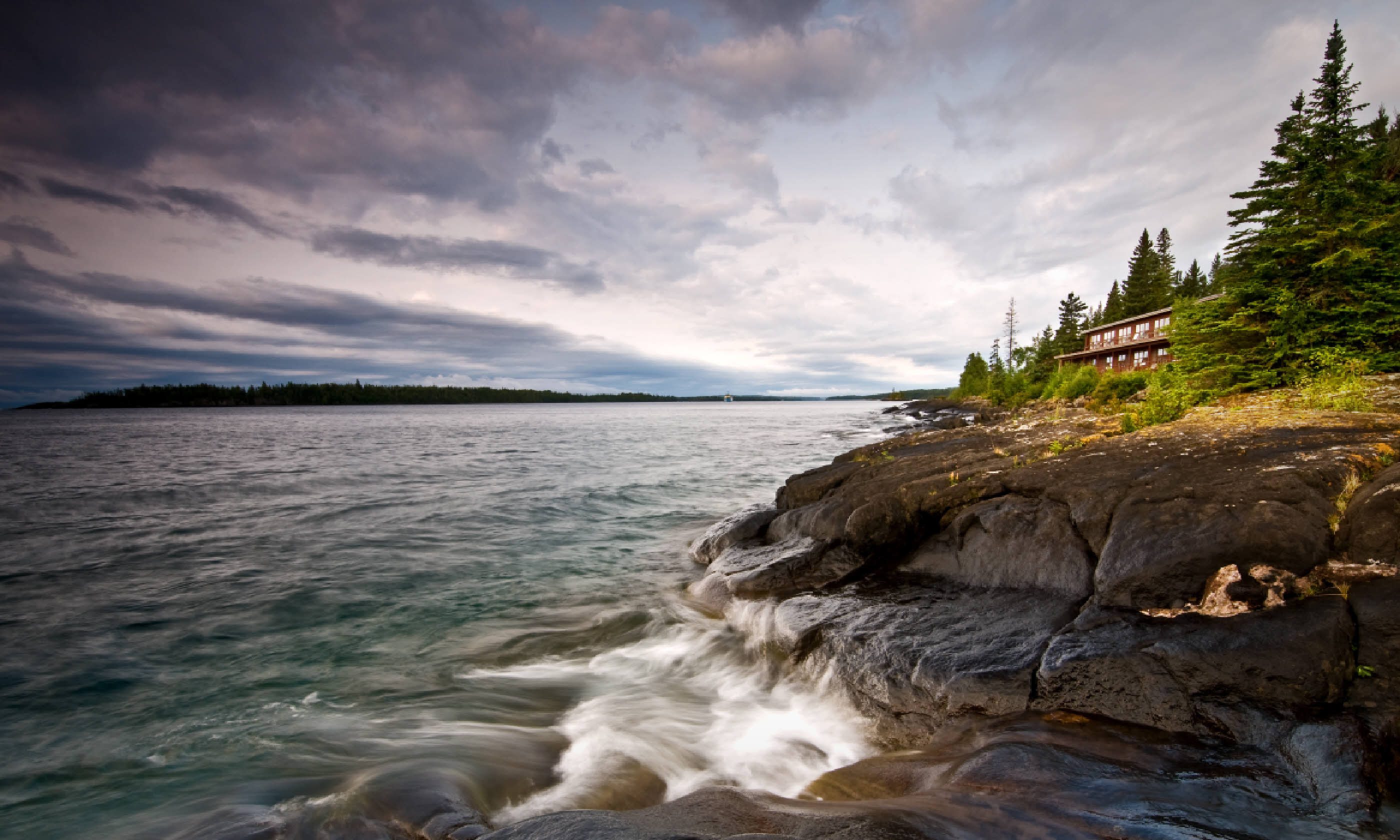
Isle Royale National Park (Shutterstock)
Those who don’t want to paddle can take guided boat trips from Rock Harbor (Jun-Sept). Or head off on a hike: there are short routes, or try the 64km Greenstone Ridge Trail, which follows the island’s rugged spine.
When to go: Open 16 April-31 October. Mid-July to mid-August is busiest; mosquitoes are worst June-early July. Fall colours can be impressive.
Plan your trip: Boats and seaplanes for Isle Royale leave from Houghton and Copper Harbor (Michigan) and Grand Portage (Minnesota). Consider a loop up from Chicago (640km south of Houghton) – you could travel north thorough Wisconsin (via Frank Lloyd Wright’s Taliesin and Chequamegon National Forest) and back south via Michigan (Hiawatha Forest, Mackinac Island, Saugatuck). www.nps.gov/isro